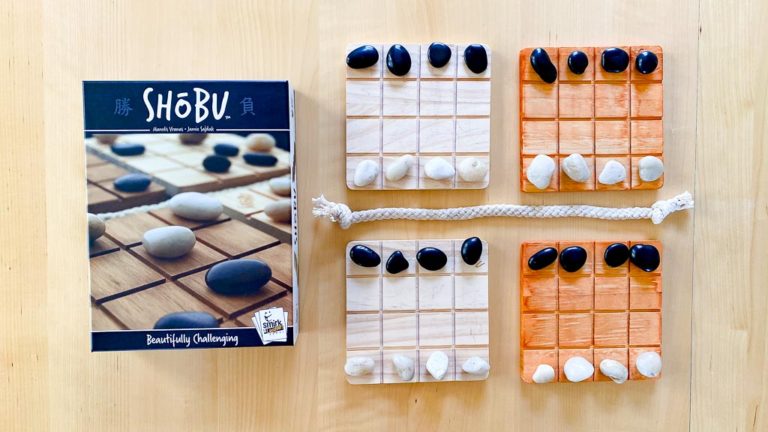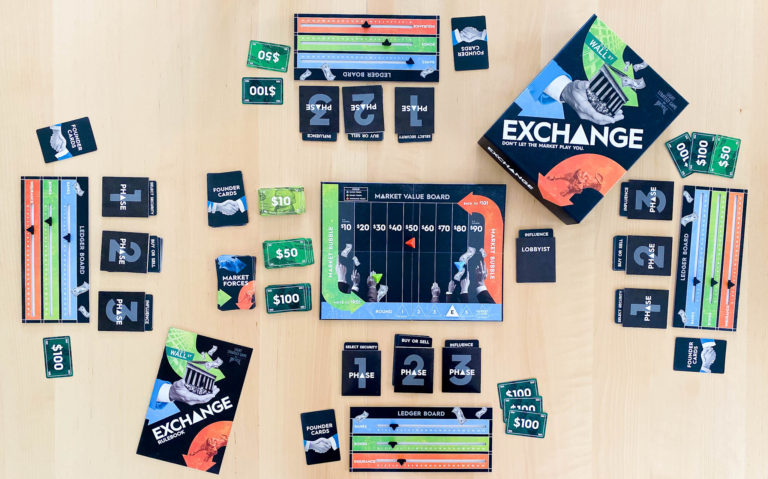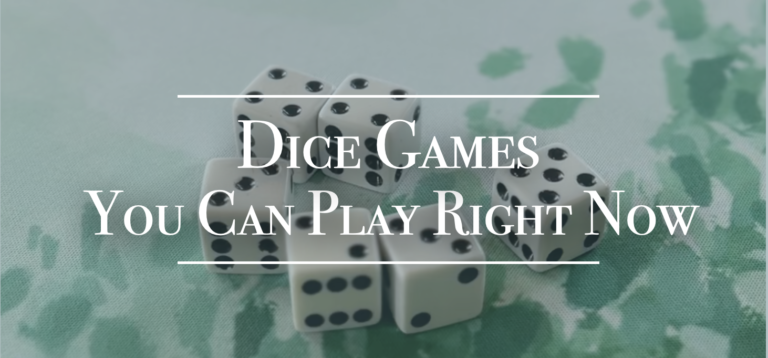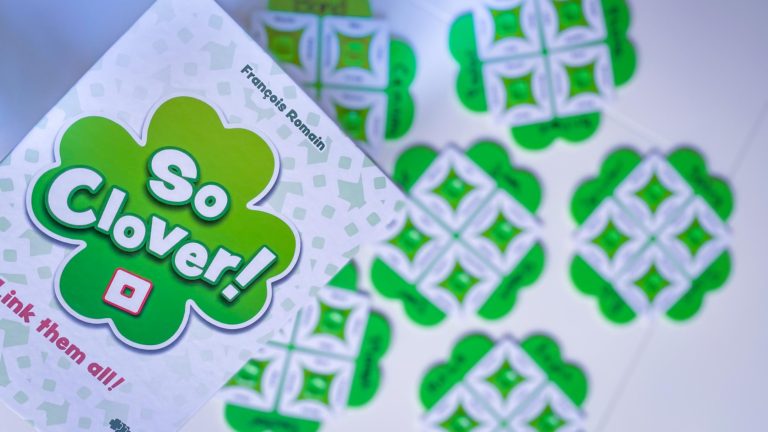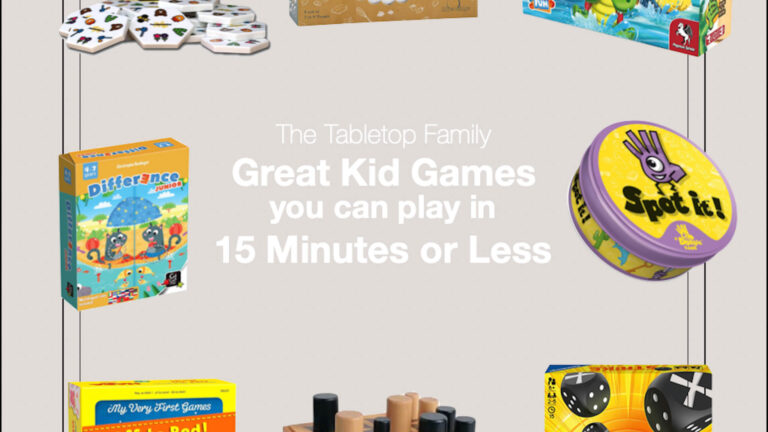Playing board games has the wonderful benefit of not only being fun, but also intellectually stimulating. Among the many valuable attributes of games, through playing, kids and teens can learn valuable social skills, practice good sportsmanship, work on math skills, and increase their reading comprehension.
I believe many games can be used in unique ways to provide educational experiences for the players. But few games provide such a great system to foster educational and STEM focused lesson opportunities in a fun, non-traditional setting as Gridopolis.
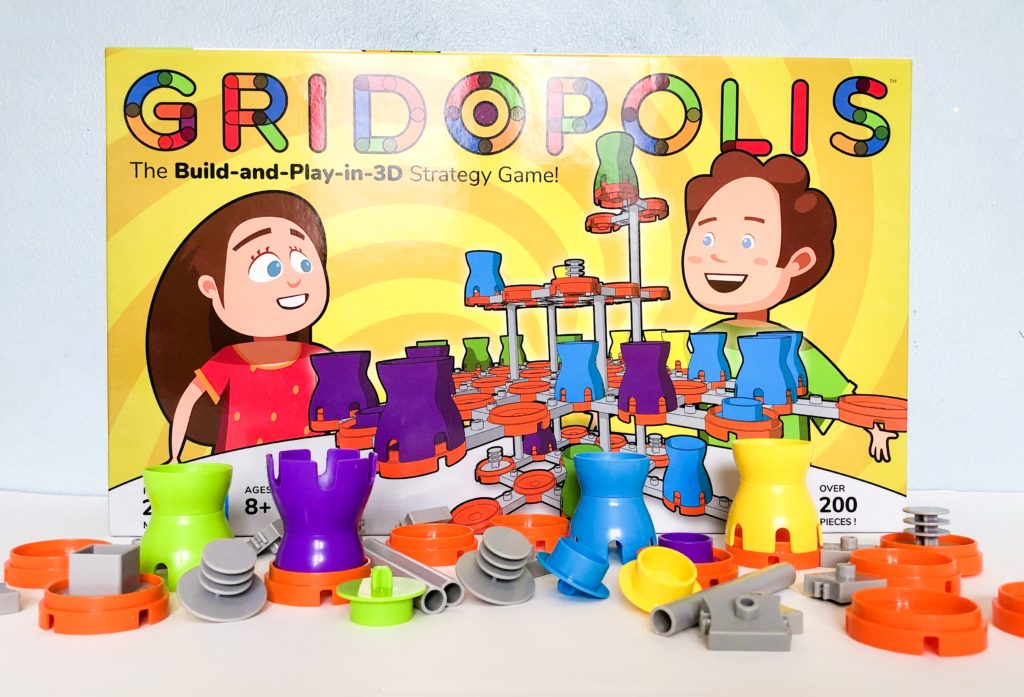
What is it?
Gridopolis is a unique, first of its kind, 3D strategy gaming system.
The goal is to capture your opponents until you are the last one left or time has run out. You capture others by jumping over them, similar to how you would move in checkers.
Rather than playing on a flat board you have the ability to move and think creatively in 3D. Able to move up and down the board, called a “grid-set,” the game borrows familiar rules from games like checkers and chess making Gridopolis easy to learn, yet surprisingly challenging as you are forced to think and move in a three-dimensional space.
Once you get the hang of it, you can decide to change it up. Gridopolis is a completely flexible, totally modular gaming system where you can switch from player to architect. Design not only your own grid-set, but take control of the rules too and create an entirely new game! This function takes Gridopolis from a 3D strategy game to fantastic STEM tool!
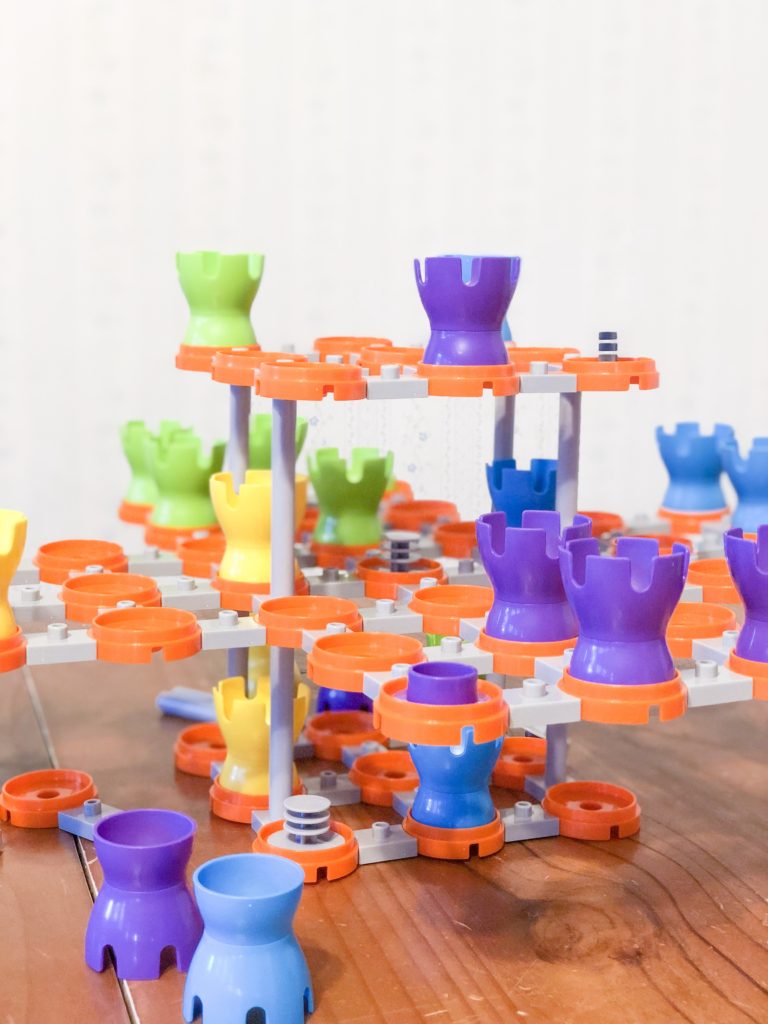
What’s in the box?
Inside the box you’ll find over 200 parts that are all used to create the gaming system.
Inside sits all of the building parts to make the grid-set, all of the nodes that modify the pads for player markers, and the player markers themselves that function as both pawns and kings throughout the game.
I’ll be honest, my first thought when opening the box was, “Oh boy, this is going to take a while…” Yet assembly of the game goes very smoothly! All of the parts are well made and snap together quite easily. The included rules booklet has a well illustrated assembly guide to help you get going. Set up took me about 5 minutes, far less than I had worried it would upon opening the box.
A second worry I had was that it wouldn’t all fit back in as easily. If you completely take apart every piece of the game and put it back in it can become something of a puzzle. It’s not impossible to get everything back in the box, but it does take a little adjusting. However, you can leave most of the pieces together. We were able to leave large sections of the grid-set assembled which allowed not only for everything to fit relatively easily back inside, but it also made set up for future games go much quicker!
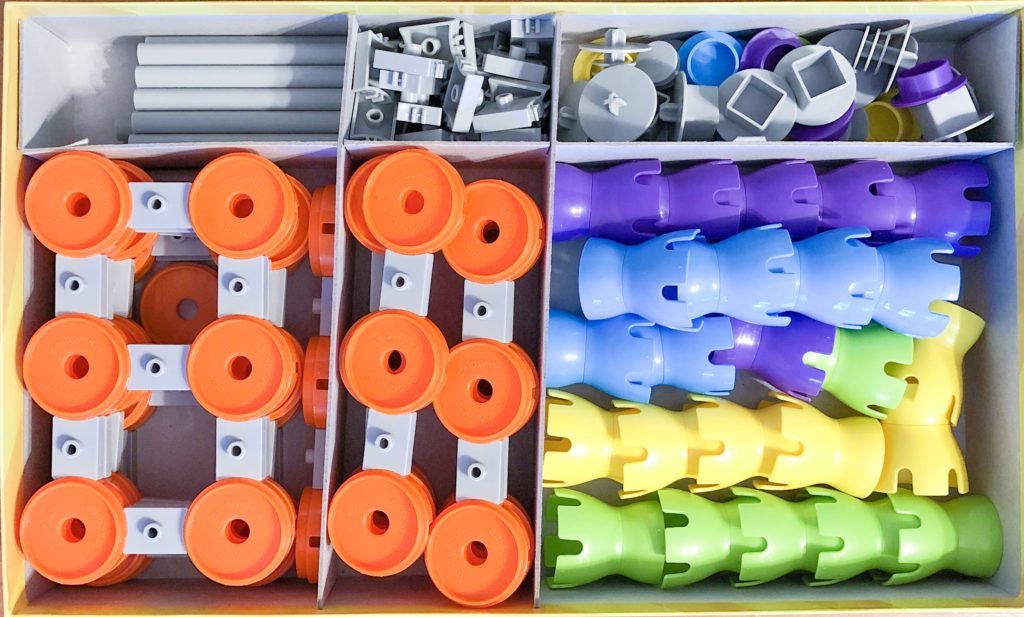
Rules for Play
Once you have your grid-set assembled you’re ready to play the basic game. Each player also gets three pads, two blocker boxes, and two posts and sets them aside for later.
Before you begin you’ll just need to decide if you are going to play a last-marker standing game, where the last person left on the board is the winner, or if you are going to play to a time limit of your choosing where the winner will be determined based on a point system after the game is over.
Moving
As mentioned above, the Gridopolis borrows rules from games like checkers so it will feel very familiar at the beginning. Your markers are all placed to their pawn side, and while in pawn position they may only move forward, one pad at a time, and are unable to move backwards toward their home-row. They are however able to move diagonally, sideways, and from one level to another.
On the pads of each players home-row are “kingerizers.” These are colored nodes that turn opponents’ pawns into kings when they land on them, just simply flip the pawn over. Once your pawn is a king, much like in checkers, your movement abilities change.
As a king you may move one pad in any direction, but you also get two separate moves in a row with the second move being optional. This becomes a huge advantage for players.
Hyper-Pads and Blocker Boxes
Other things you’ll notice are two different nodes able to be placed on the pads called hyper-pads and blocker boxes.
There are five hyper-pads that are placed on the grid-set before play. Any marker that lands on this space during the game will beam out to any other open hyper-pad of their choosing. This travel does not count as an extra move. When using a hyper-pad, pawns are no longer subject to the ‘moving backwards’ rule, any hyper-pad is allowed.
Blocker boxes are given to players before the game starts. They can choose to place one of these on the board in lieu of moving a marker. Blocker boxes eliminate any pad its placed on and once played it cannot be moved. All players must go around them for the remainder of the game. Blocker boxes can be placed on any open pad, so long as it is not a pad in use by another players marker, a hyper-pad, or a kingerizer space.
Adding to the Grid-Set
Gridopolis is a completely modular game, even during play! Meaning that the grid-set you start with isn’t necessarily the one you end with.
Every player is given three pads and two posts at the start of the game. On their turn, instead of moving, they can choose to add a new pad to the grid-set. These pads can be added anywhere they fit, either horizontally or vertically.
This adds another whole layer of strategy for players to utilize as they can change the grid-set to help them accomplish difficult moves, or get out of tight spots.
Jumping & Capturing
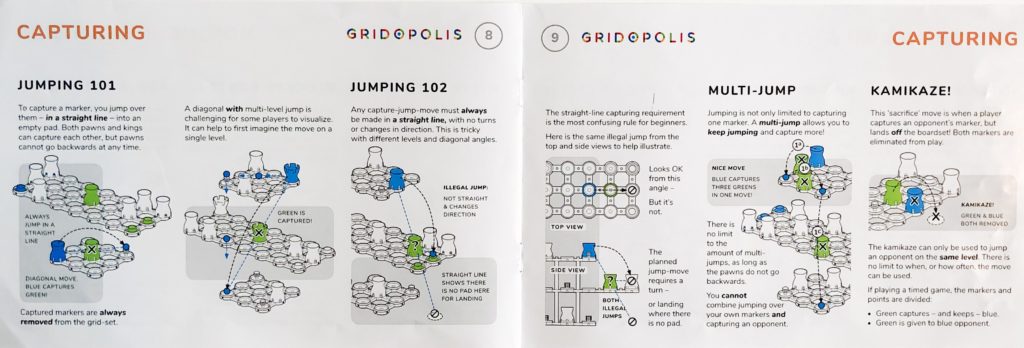
Players are able to capture the markers of other players by jumping them. Jumping works, in theory, just like it does in checkers. However, because this is a 3D game, you are able to jump through multiple levels to capture markers as well!
The jumping rules take the most getting used to. Luckily there are helpful illustrations in the rule booklet to walk you through it.
Basically it boils down to that legal capture-jump-moves must always be made in a straight line with no turns or changes in direction. It takes a couple of jumps from different angles, directions, and levels, to get the idea, but thanks to the helpful rulebook, it doesn’t take too long to catch on to.
You are also able to perform multi-jumps as well. Much like in checkers, there is no limit to the number of multi-jumps you can do, just so long as they are all a: legal jumps, and b: pawns making the jumps do not move backwards. King markers are able to jump and capture in any direction. Any marker captured is always removed from the board.
You cannot jump over your own markers following these rules.
There is also an included sacrifice move called a Kamikaze move. This is done when a player jumps to capture an opponent’s marker but lands off the grid-set. This move can be made only if the two players are on the same level. In this instance, both markers are removed from the grid-set with the player who made the sacrifice move capturing their opponents pawn and the opponent receiving the sacrificed marker.
Playing the Game
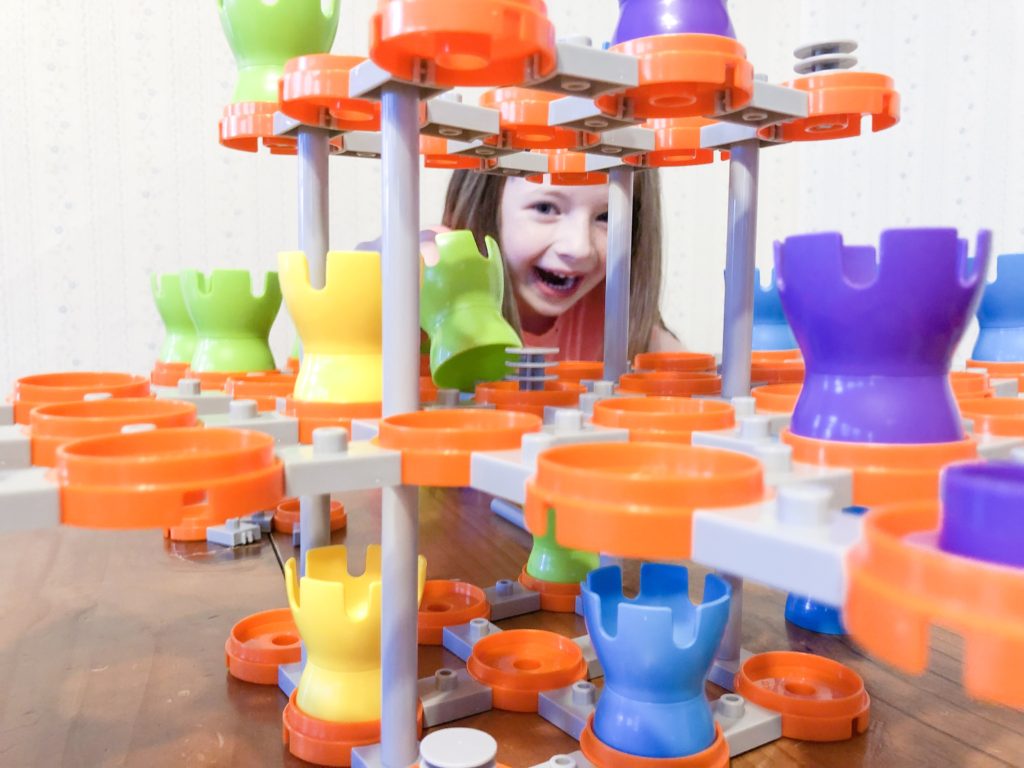
With the rules in place, the challenge begins. While the game itself is easy to learn, functioning in the 3D space proves quite challenging, in a good way. There are a lot of different angles, levels, and choices to make. Setting up your marker for a jump move isn’t as straight forward as it would be on a flat board, since now you much focus not only on your opponents position, but also which level they are on and how you might need to move to either capture them or escape capture yourself.
It is a fun and satisfying experience. Adding to the grid set also allows players to take the game to a different level, sometimes literally! Just when you think you know what you want to do, an opponent adds a new pad to the game board, potentially opening up more possible moves for you to consider.
The game plays well with just two but really starts to get interesting and exciting with 3 and 4 players. With everyone battling to capture everyone else, adding to the grid-set in a way that benefits them and not their opponents, the game really takes off.
I was worried the pieces and multi-level aspect might make the grid-set a bit unstable, but everything holds together really well. It is light without feeling flimsy in any way and is easy to add new pads and levels to without compromising the grid-set or the player markers on it.
One thing we really liked was that it was easily able to be carefully spun, Lazy Susan style almost, so that we could get a good view of the different levels and movement opportunities on our turns without needing to stand up and walk around the table.
The original grid-set and game rules really feels like a fun “checkers on steroids” experience that offered a fun and unique challenge, both for our first grader and for us as adults. Most importantly it was something we were all able to enjoy together.
Educational Opportunities:
Perhaps one of the most interesting aspects of this game is it’s potential to be used in an educational setting.
While many games can be seen as educational, because of its unique design, I actually see Gridopolis best attribute in its educational potential.
As a homeschooling mom, I’m always looking for clever ways to introduce various concepts and keep my kids engaged in their education. From the first time I played Gridopolis, I was flooded with ideas for how it could be used in our homeschool or even the traditional classroom setting.
First and foremost, I love the ability for kids to design their own game. On the surface this might sound and look like play, but what they are really doing is so much more.
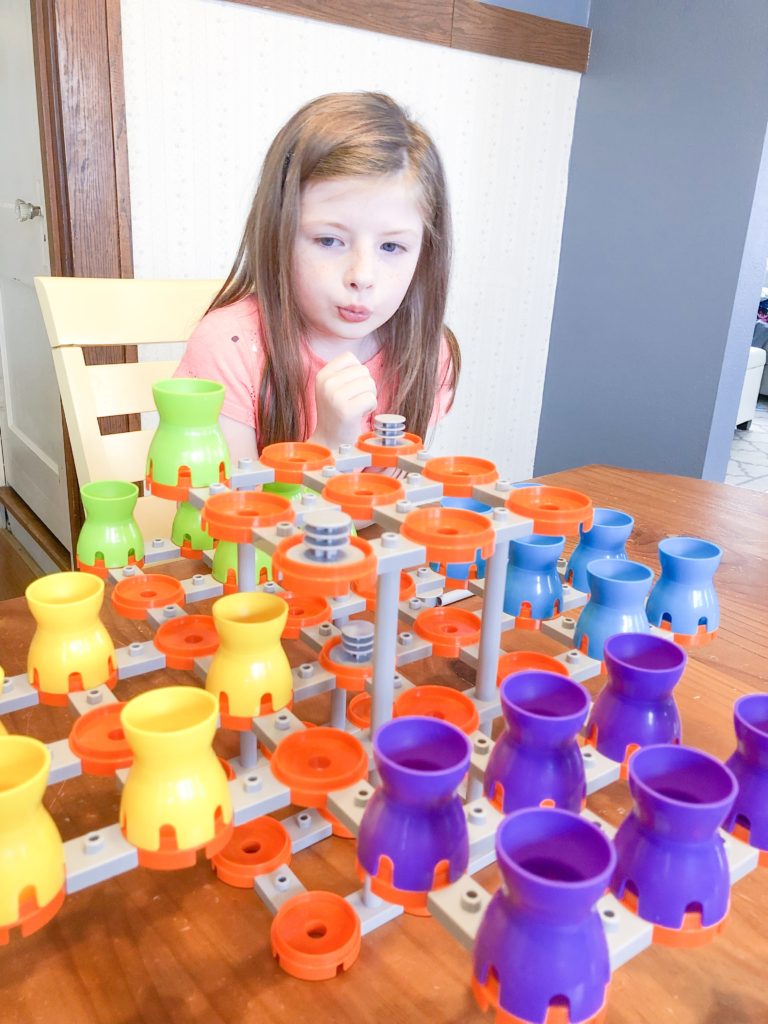
Designing a Game
Creating a game is not easy. You could design a lesson around the processes required and involved in designing their own game.
First your student would need to be introduced to the Gridopolis system itself. Playing a few games from the base grid-set allows them to learn how the pieces can move. Students will see what they like about the game, what was a challenge, and, most importantly, how they might change the game to make it something new and more interesting.
Once they have learned how the basics of the gaming system works, then their creativity can really start to flow.
Because Gridopolis is so incredibly flexible and modular, students can change anything they’d like, from the grid-set design to how the rules work. In fact, I would highly encourage both in a school lesson. Prompting the student to think critically about how their own unique game might look and operate.
“What are different ways you could design the board?” “How might that effect play?” “In what ways might you change how the markers move on the board?” “What is the goal of each player?” “How do you win?” Etc, etc.
Formulating their idea for a new game might come quickly or it might take a while. Either way, the process of thinking, researching, designing, and hypothesizing how their game will look, then writing it all down in preparation for testing is all part of the learning process.
Once their ideas are set, then they can experiment and test them out.
Here they’ll be able to see what is and is not working. Perhaps some aspect of their design will need to be re-worked, changed, or scrapped all together. After conducting their play-tests, they can analyze their results and then, most likely, jump back to the drawing board to change or tweak their design, coming back again to the experiment and testing phase.
One they’ve got a design that works, then they can present that design. Writing down what their process looked like, how difficult it was, things they learned that surprised or frustrated them would make a great writing aspect to the lesson.
The coolest part? Whether they realize it or not, in creating their own game design, they had to follow the steps of the scientific method!
- Ask a question
- Gather information and observe (research)
- Make a hypothesis
- Experiment and test your hypothesis
- Analyze your test results
- Present a conclusion
That is a LOT of learning potential from one gaming system! And to think, they can design as many different games as they would like!
Lesson Extension Opportunities
The educational opportunities don’t have to stop there, however. You can use the Gridopolis system to cover a wide variety of subjects, such as language, social, and even economic lessons as well.
Writing a Rulebook
You can’t have a game without a solid set of rules, after all. Once your student has designed their own game and gone through the whole process of testing, analyzing, reworking, and presenting, they then might want to think how they might create a set of rules so that someone who is not them could read and interpret how to play the game they designed.
I love a good writing lesson! And in creating a rulebook, they’ll realize that sometimes knowing how to do something, and teaching someone else how to do it is not as easy as it looks.
They could examine a variety of different rule books. Ask them questions like, “How do you think a rule book should be set up?” “What similarities do you notice in how these different rule books are ordered?” “Do you find these rules easy to interpret?” “Why or why not?”
Again, they’ll have to write down, and test out how well their rules are understood by collaborating with other students or those unfamiliar with their game. They may have to rewrite sections that were difficult for players to understand before they can create their final draft for presentation.
Selling Their Game
Perhaps you as the educator want to challenge them to think about how they want to market their game.
This could be an especially fun lesson for older students. Who do they think would be interested in wanting to play their game? How would you they market the game to that customer? How do you price a product?
Put in a public speaking element by having students stand up and present their game to a group almost like a Shark Tank pitch.
Gridopolis Lesson Plans
There are so many possibilities with this system and directions that you as the educator could take it to meet the needs of your students in fun, outside-the-box ways.
Gridopolis will be offering different lesson plans that will be available online for those who are interested in using the gaming system in their homeschool or classroom. So if you are interested in using the system in an educational setting but unsure how best to structure a lesson around it, they will have a few different lesson plans available in the future to aid you in this process.
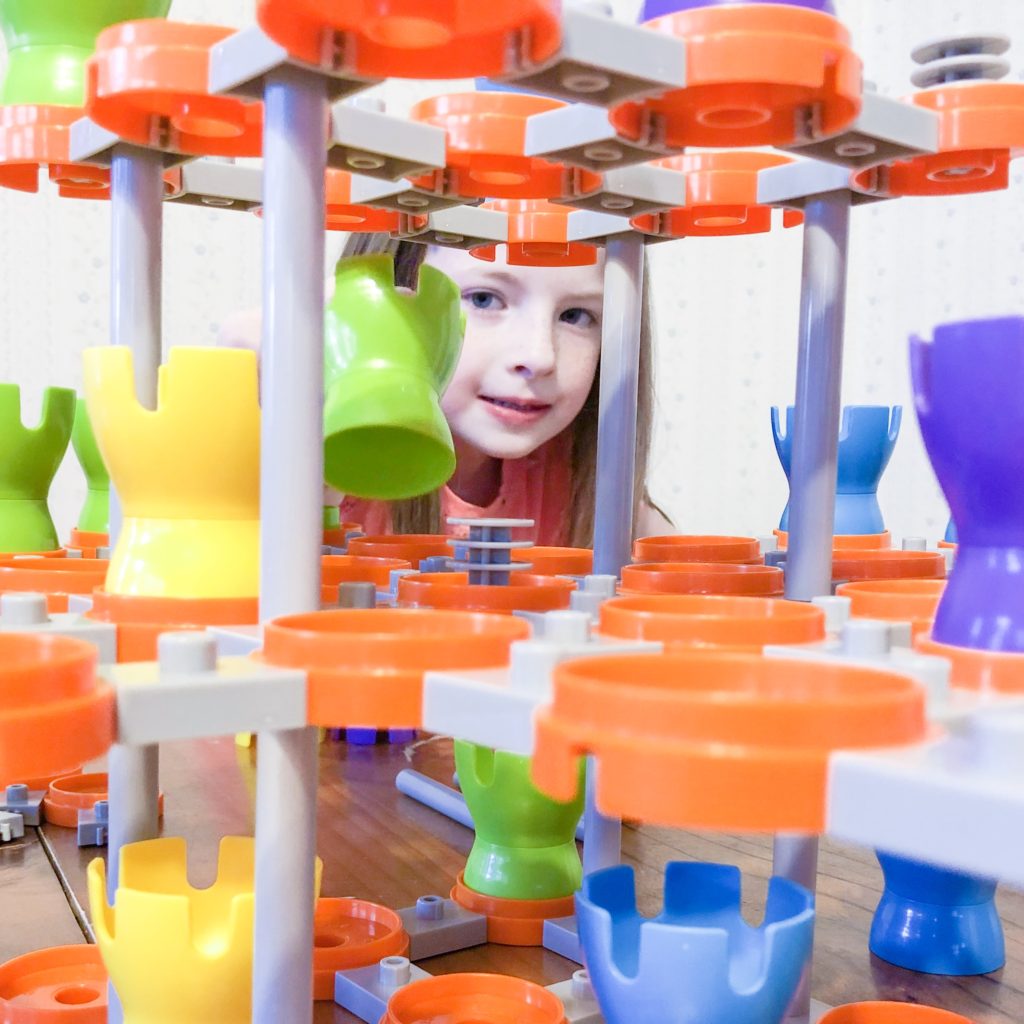
What Do We Think?
Overall, I am really impressed by Gridopolis, both as an educator and as a gamer.
Construction-wise, it really looks unique and inviting on the table. The three-dimensional aspect had our kids excited and interested from the get-go.
While it probably wouldn’t be a game that my husband and I would pick up to play just us adults, the bright colors and design really interest our first grader who is always excited to set it up, play, and create her own rules.
That being said, because of the flexibility of the game, it has sparked our imagination as adults as well. We’ve redesigned the grid-set for various play set-ups, changed and tweaked the rules here and there, and have thought about what game we might try to create using the system.
There is a bit of a small learning curve when learning how the markers move on the standard grid-set. The rule book comes with easy to read rules and nice illustrations to help show you how the markers are to operate on the grid, but it all makes much more sense once you put all the pieces on the grid and start playing. If you need any help while playing, the quick start guide provides easy to read rules that cover most any question you might have, from set up to game play.
There is a potential that the flexibility may be a bit much for some players. Creating your own game may be too intimidating. You definitely don’t have to do this if it isn’t of interest and you can certainly play one of the pre-designed games available in the rule book.
One of the exciting things about this company is how they plan to share the new designs with their players. Getting to talk with Dave Schultz, the creator of Gridopolis was so fun just to hear all of the hopes and plans for this system. Online at the Gridopolis website, not only do they have a page full of ideas to help players design their own game, including a “RuleBook CookBook” but they also have a section to submit your own ideas!
Imagine that when a new design for the game gets submitted to the website forum, you can download the rules, grab your game off the shelf, and start playing the new game right away! No need to run to the store, you’ve got everything you need in the Matrix box! That kind of crowd sourcing and idea sharing is a really fun aspect to this game.
If you enjoy abstract gaming, love classical games such as checkers, Chinese checkers, or chess, and/or are interested in the educational and STEM potential of this system, then I think Gridopolis could be a great fit for you and your family!
Where can you find it:
So after all that you may be wondering where you can find Gridopolis!
Gridopolis is on Kickstarter! To get a copy for your home, be sure to check out their Kickstarter campaign page HERE!
You can also follow them on Instagram or Facebook!
Thank you so much to Gridopolis Games for providing us a copy of the Matrix system to use for this review.
As always, our reviews and opinions are our own.
Game Information:
Title: Gridopolis : Matrix
Play time: 20-60min
2-4 Players; Ages: 8+
Designer: Dave Schultze
Publisher: Gridopolis Games

